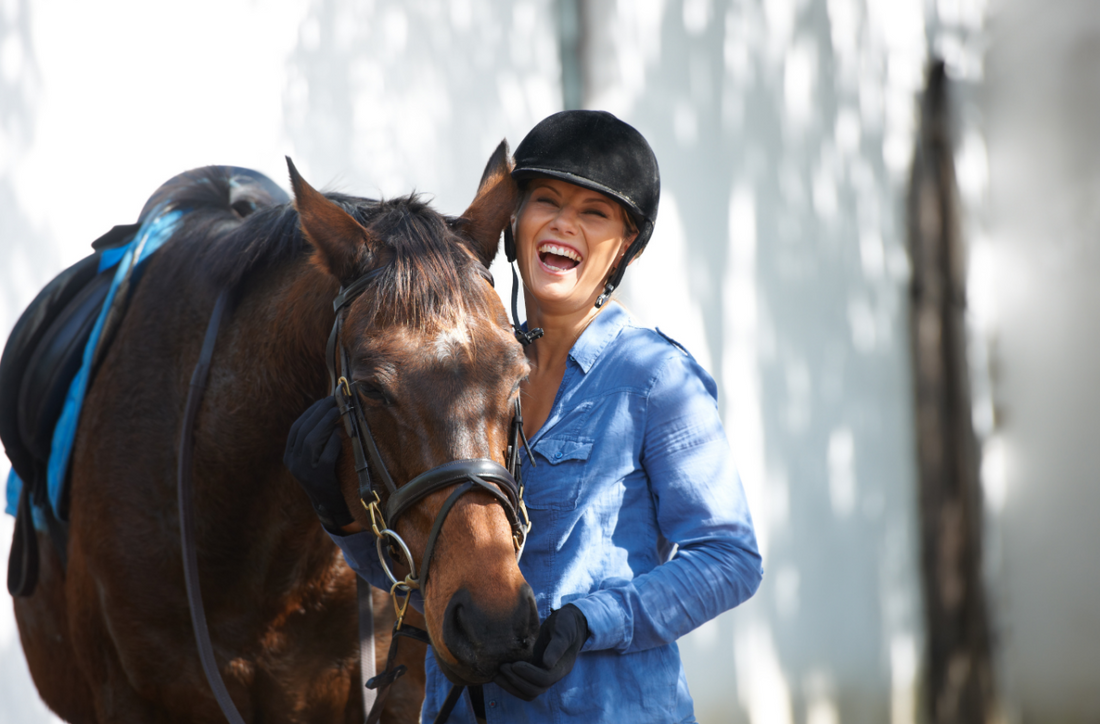Horse riding is a popular sport and leisure activity enjoyed by people of all ages and genders. However, many female equestrians are not able to enjoy riding as much as they would like to due to urine leakage.
Stress urinary incontinence whilst horse riding
The leakage is caused by stress urinary incontinence. Stress urinary incontinence is a condition where the bladder involuntarily leaks urine during activities that put pressure on the bladder, such as riding, coughing, sneezing, laughing, or exercising. Symptoms of stress urinary incontinence can vary from mild leakage to complete loss of bladder control. Some women may only experience incontinence when riding, while others may have symptoms during everyday activities. Causes of stress urinary incontinence include weakened pelvic floor muscles, hormonal changes, pregnancy, childbirth, menopause, and certain medical conditions.
Incontinence when horse riding can be an embarrassing and uncomfortable experience, but you are not alone. There is often a line of women in front of the bathroom in the stable, waiting to pee before the riding session. The pressure of the saddle, the horse’s movements and the posture required for riding can all result in leakage. It is important to note that it is not the horse riding that cause the urine leakage or makes it worse, on the contrary, horse riding is an excellent way to strengthen the pelvic floor which thereby can cure the stress urinary incontinence. Most women hide the problem and avoid speaking openly about it due to embarrassment. They might even stop horse riding altogether. We think it is time to remove the taboo and shame surrounding urine leakage and instead accept that it is quite common and do something about it.
How to handle urine leakage when riding
To stop urine leakage when riding, there are several things to do. The most obvious is to make sure you empty your bladder before riding. This can help reduce the amount of urine in the bladder and lessen the chances of leakage. Additionally, practicing pelvic floor exercises can help strengthen the muscles that support the bladder and prevent leakage. A pad or panty liner during the ride can provide additional protection and confidence. Or maybe try underwear for horse riding? You may find that certain riding styles or positions exacerbate the incontinence, so it’s important to experiment with different techniques to find what works best.
It might also be worthwhile to try Efemia Bladder Support. It is a medical device that is inserted vaginally like a tampon and works by supporting the urethra to prevent urine leakage. A recent study involving 39 British and Swedish women showed that most of the women felt it to be comfortable and that it reduced their urine leakage.
If incontinence when horse riding persists despite these measures, seeking medical advice is recommended. A urologist or specialist continence nurse can help diagnose and treat the underlying causes of the urine leakage. They may suggest medications, pelvic floor physical therapy, or TVT surgery. In some cases, you even have the right to get prescribed incontinence aids, totally free of charge. Here is a summary of ways to treat stress urinary incontinence.
Don’t let bladder leaks stop you!
In conclusion, incontinence when horse riding can be a common issue for women, but it doesn’t have to stop you from enjoying this activity. By taking action to manage stress urinary incontinence, such as peeing before riding, practicing pelvic floor exercises or try to use bladder supports, women can continue to enjoy their time in the saddle. If incontinence persists, consulting a healthcare professional can provide further help and support.

